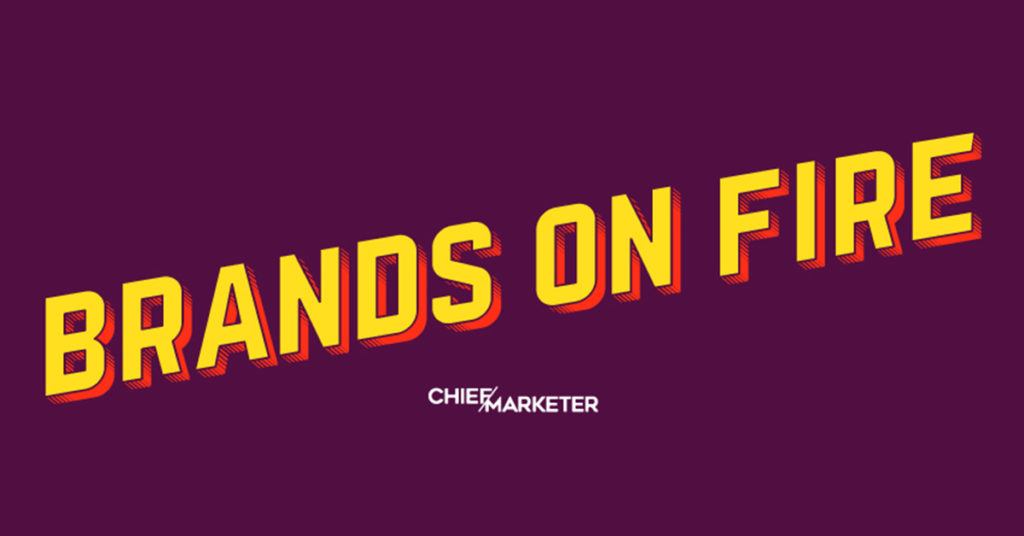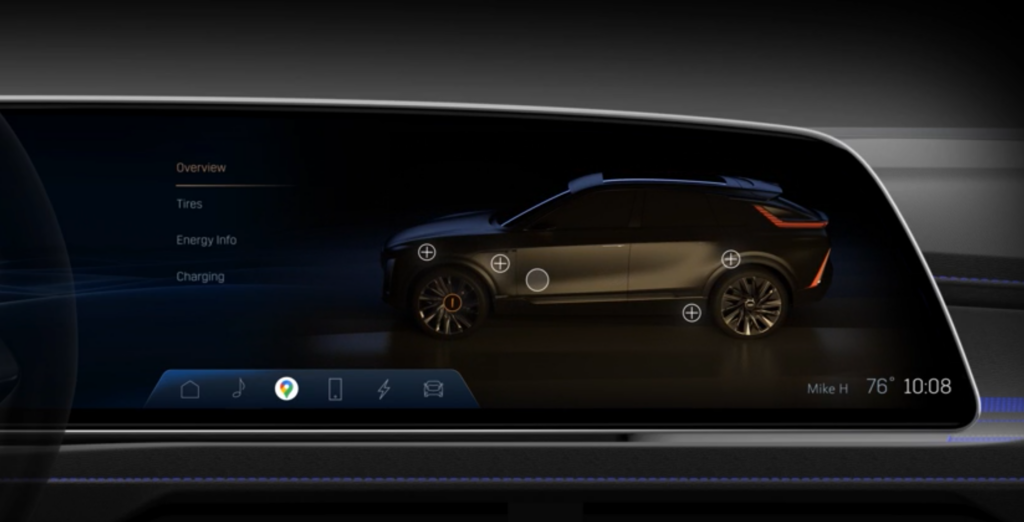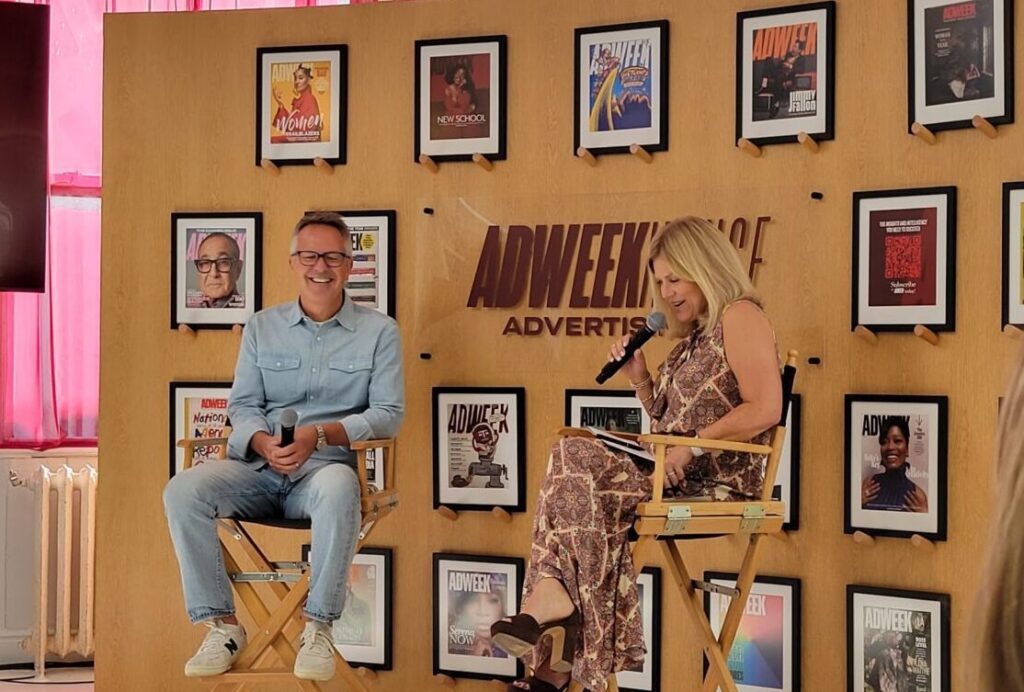Our monthly analysis of the world’s top brands and the marketing moves that are setting them apart.
—
The tech extravaganza that typically descends upon Las Vegas this month, CES, has gone virtual—and brands have had to adapt. Take Cadillac, which showcased the customizable user interface of its first all-electric SUV, LYRIQ, an interactive display that gives drivers key details about the vehicle and a personalized experience, to attendees in a virtual setting. The 33-inch diagonal LED display, created in partnership with Territory Studio and customer experience company Rightpoint, wraps toward the driver, has the potential of displaying one billion colors and offers ambient lighting customized to users’ preferences.
We spoke with Cadillac executives about virtual product launches, the challenges—and opportunities—of showcasing a new user experience in such as setting and the importance of personalization and UI in marketing automobiles today.
Chief Marketer: What are the key features of LYRIQ’s user interface, and how is it personalized for drivers?
Bill Thompson, GM Senior Manager, User Interface Design: When we set out to redesign the centerpiece for Cadillac, we wanted to do that in a singular piece of glass. From a design and aesthetic perspective, you’re presented with a clean, open slate to work with. That goes a long way for us when we’re working on feature enhancements for things like Super Cruise, where we have more breathability into the cluster portion of the display where it’s not so constrained by hard edges. The second thing is vehicle health. That’s a big play for us in terms of being able to pass information along to the user that leverages a real-time 3D rendering engine to present things that maybe need attention in a vehicle, such as low tire pressure. So, being able to jump in and use gesture-based motion with your fingertip and understand diagnostically what’s happened.
The ambient lighting strategy is a whole other area of personalization for us. There are moods that you can tailor inside of the vehicle, in terms of what you’re listening to and how the ambient lighting responds to those types of moods. In terms of personalization, the configurability of the singular piece of glass offers the user the freedom to put information that users may access frequently in places where they would want it to go.
CM: Talk about the challenges to marketing a product like this virtually. I’m sure your product launches have changed quite a bit in a year.
Jason Sledziewski, Global Director of Product Marketing, Cadillac: It is challenging, and it’s different without live opportunities like we’ve had in the past. It’s also challenged the team to think differently and create engaging digital content. For our LYRIQ show car reveal back in August, we were able to leverage our channels and other media partners’ channels to amplify what would normally be a gathering and make an impactful reveal without that physical experience. As we move forward—and we all hope we get back to having people together and having these on-site engaging experiences—we’ll continue to press ourselves to create that engaging digital content so we can get it to a larger cross section of consumers and interested parties. In the end, it will be a benefit to us to with how we do our reveals, launches and engaging content moving forward.
CM: Another way Cadillac has interacted with consumers virtually is through gaming, such as your Escalade sponsorship on Twitch. Is that something that the brand will continue?
JS: We know how much gaming has been part of the zeitgeist, but with a lot of us locked down for some time, gaming has only increased. We wanted to take advantage of that. We had gotten a little into gaming before. We launched the Cadillac Gaming Club within the Forza racing games, and we invited players to design their own one-of-a-kind Cadillacs. We even had our GM design employees give out awards for best custom design and engage with players, taking that gaming environment and connecting it right into our real world of Cadillac design.
We see ourselves continuing to do these engagements. Back in November, we hosted several livestream events on Twitch, Mystery Gamers, and through that we were the number one trending stream. As we come into 2021, we’re continuing to have this always-on strategy in gaming and work with platforms like Twitch.
CM: What are the challenges to showcasing the vehicle’s user experience in a virtual setting?
BT: It’s enabling us to rethink the pieces of work and how we highlight that. In general, when we used to do these things physically in person, we had very limited time and exposure. You have to move people into and out of a physical property, whether it’s at an auto show or CES. [With this] we’re tremendously advantaged. We have some events coming up where we’re lifting the hood back a little bit more, where we can spend more time specifically around the user interface, and digitally expose a large audience to things that they might not have time to get through in a physical environment.
CM: How important is the user interface of your products to marketing the automobiles that you have today?
JS: It’s of the utmost importance. As the Cadillac brand, we want to be world-class and lead in customer experience—and the user interface is a part of that. The other piece is around personalization and all that the vehicle can deliver through this interface. As we look at Cadillac as a luxury brand and breeding those unique experiences, technology like this is what enables that feeling in the vehicle for these customers. Luxury of the past, the leathers and the right touches and the right stitching, is still true in Cadillac. But as we go into the future, we want to create unique, engaging experiences—and our user interface is a key part of that.



 Network
Network

